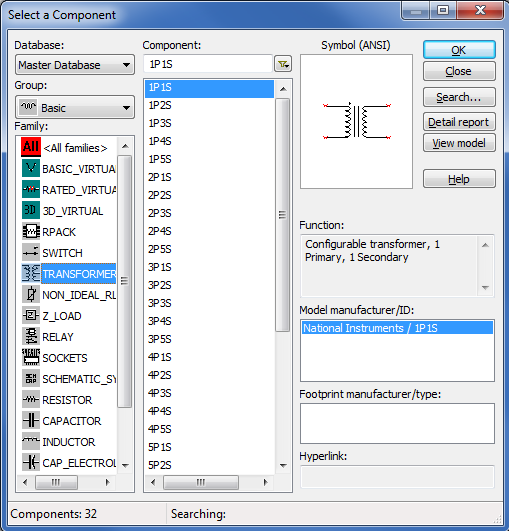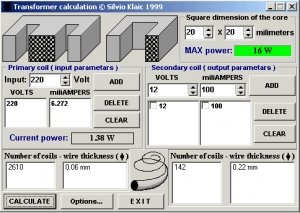Ferrite Core Inductor Software Downloads


This article provides a comparison of Magnetics powder and ferrite cores when used in inductors, including small and large DC inductors and large AC inductors. For additional assistance in determining a Magnetics core(s) to use in specific inductor designs, download our Inductor Design tool or contact Magnetics with your. --Filesize ~1.5 MB. Click Here to Download Inductor Design Software 2010 (MicroRelease_March2010.exe). The user has the option of specifying core geometry (i.e. Toroid, E-Core or Ferrite/Iron Powder Composite), specific core materials or all materials, metric units or English units, maximum window fill.
Introduction An inductor is a current filtering device. By resisting change in current, the filter inductor essentially accumulates stored energy as an AC current crests each cycle, and releases that energy as it minimizes. Power inductors require the presence of an air gap within the core structure. The purpose of the gap is to store the energy, and to prevent the core from saturating under load.
Another way to express the function of the air gap is to say that it reduces and controls the effective permeability of the magnetic structure. Since μ = B/H, the lower the value of μ, the greater the value of H (or current) that is supported at a level of B that is less than the maximum value of flux density (Bsat) inherent in the magnetic material. One envelope constraint is that Bsat is not widely variable. The physics of soft magnetic materials result in the case that commericially useful materials range from about 0.3T to 1.8T in Bsat. The power inductor gap may be realized in one of two fashions, discrete or distributed. Advanced Id Creator Crack Keygen Software. Distributed gap materials are. At a microscopic level, magnetic alloy powder grains are separated from one another by binder insulation or by high temperature insulation coating each grain.
(This is not at the magnetic domain level; domains are vastly smaller than powder core grains.) Distributing the gap throughout the powder core structure serves two main purposes: (1) eliminating the disadvantages of a discrete gap structure, which are sharp saturation, fringing loss,and EMI, and (2) controlling eddy current losses so that higher Bsat alloys may be used at relatively high frequencies, despite comparatively low bulk resistivity in the alloy. Discrete gaps are most commonly used in.
The main performance advantage of ferrite is low AC core loss at high frequency, due to high material resistivity in the ceramic material, compared with metal alloys. Ferrites are at the low end of the available range for Bsat, and they shift down in Bsat significantly with increasing temperature. Valley Cougar Sm Dart Board Manual. The discrete gap structure results in an inductor that reaches a sharp saturation point, requiring lots of headroom in the design. Discrete gaps also result in inductors that are vulnerable to eddy current losses in the coil due to fringing, and to generating EMI. Discrete gaps are also used in amorphous and nanocrystalline tape wound cut cores, which have improved AC loss performance compared with powder cores, but often at a cost disadvantage. The inductor designer must meet the energy storage (inductance) requirement, as well as requirements for total loss, space, cost, EMI, fault-tolerance, temperature performance, and reliability.
El Camino Del Guerrero Pacifico Pdf. In the many cases powder cores have the clear advantage. Then the designer has a variety of options in choosing among the powder cores. Core Material Properties (Molypermalloy Powder) cores are distributed air gap toroidal cores made from a nickel, iron, and molybdenum alloy powder. MPP exhibits the lowest core loss of the powder core materials, but it has the highest core cost due to processing costs and its 80% nickel content.
MPP toroids are available from 3.5 mm to 125 mm in outside diameter. Cores are distributed air gap toroidal cores made from a nickel-iron alloy powder. Containing 50% nickel, and with processing costs comparable with MPP, High Flux pricing is typically 5%-25% less than MPP. High Flux exhibits higher core loss than MPP and Kool Mμ, but due to its higher Bsat, High Flux exhibits the best performance in permeability vs. In other words, higher Bsat translates into best inductance stability (least shift) under high DC bias or high AC peak current.